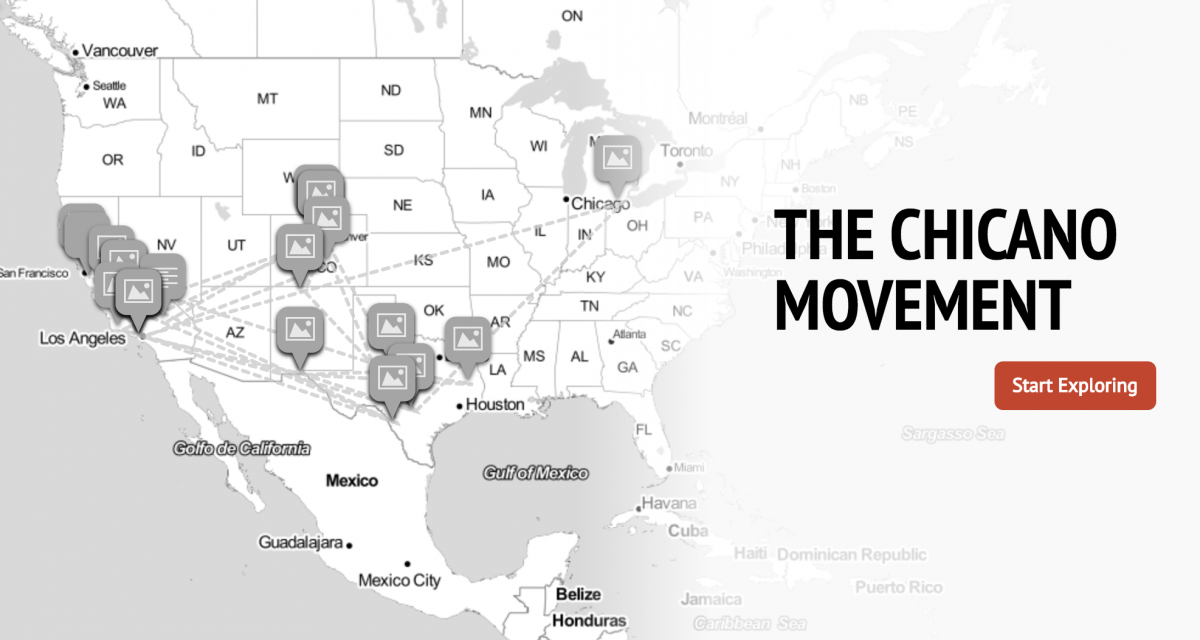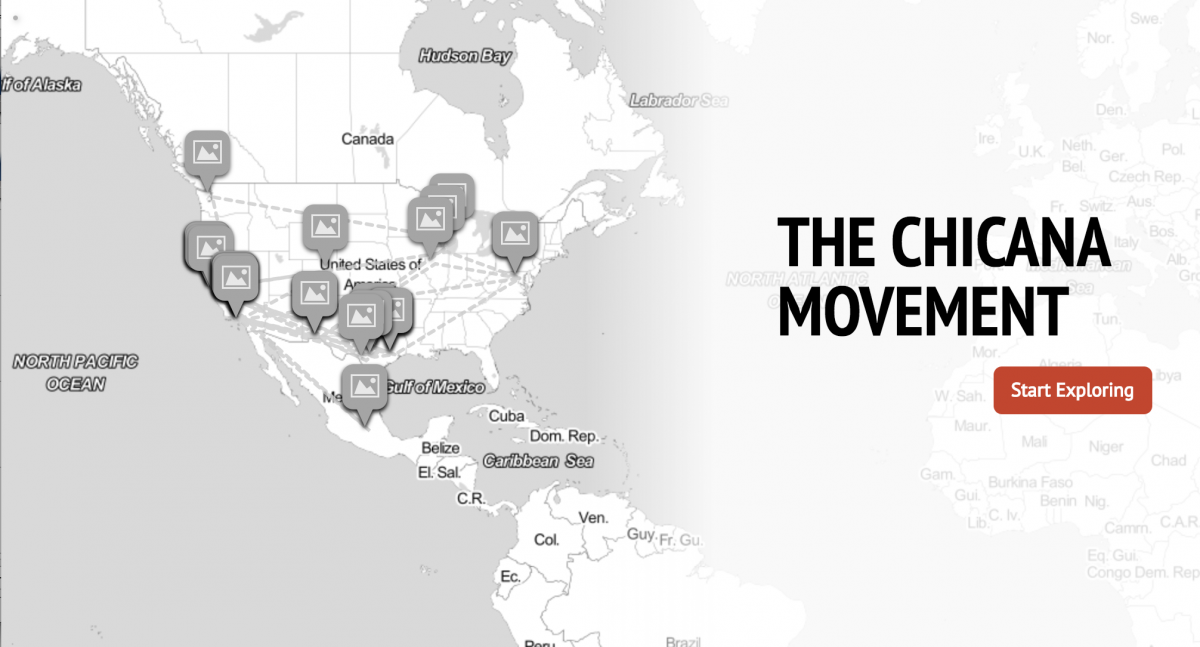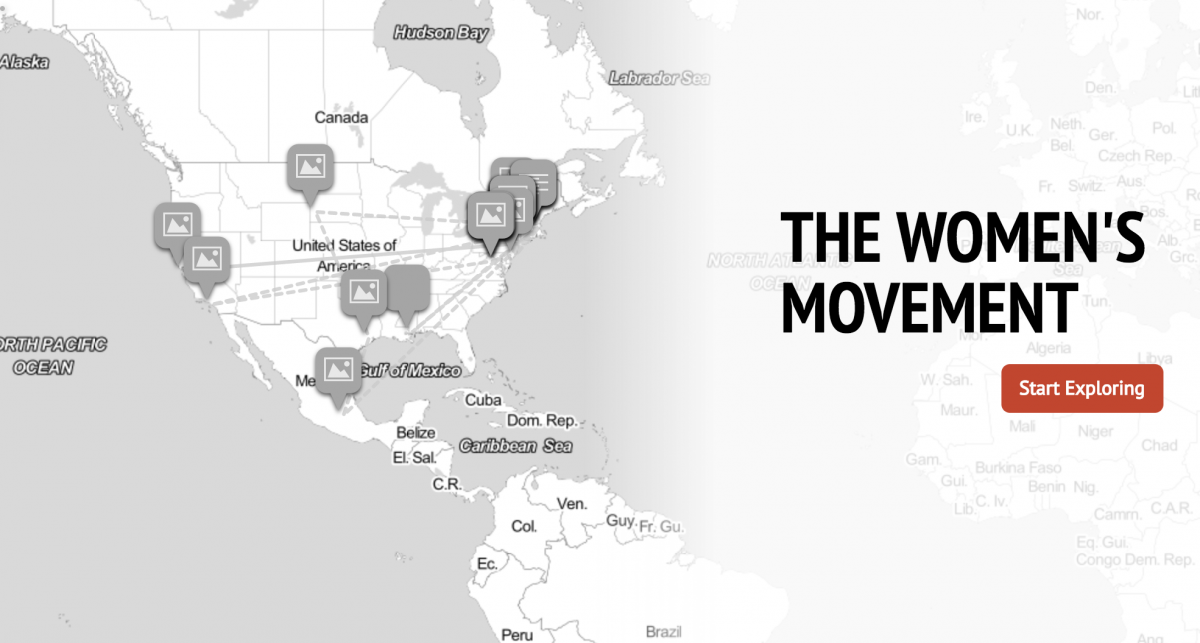Visualizations like timelines and maps allow researchers and educators an opportunity to understand the period examined in the Chicana or mi Raza Digital Memory Collective as a broad spectrum of interconnected events, organizational networks, and political mobilizations. The information on the historical events documented in these visualizations have been gathered from scholarly books and articles, online resources, and through the personal memory and archives of the women in the Chicana Digital Memory Collective. The work on these visualizations has been completed by the following members of our collective: Maia Volk, Linda Garcia Merchant, Tiffany González, Rebecca Gomez, Shauna Paulson, Adonia Arteaga, Carolyn Racine
Chicana timeline:
This timeline traces the actions of Chicanas working at the intersection of the Women’s Movement and the Chicano Movement. As this timeline demonstrates, Chicanas used direct action, scholarship, and coalition building, among other strategies to illuminate their narrative at the intersection of their identities as women and Mexican Americans.
Story Maps created by Maia Volk
Chicano Movement Map:
This map represents the history of the Chicano movement, a more well known history often told from the perspective of men within the movement. Throughout the 1960s and early 1970s the Chicano movement advocated for Mexican American civil rights and empowerment. The movement was ignited through direct action advocating for farm workers rights., struggles against police brutality, and demands for equitable education.

For a guided tour through this map visit:
Chicana Movement Map:
This map traces the actions of Chicanas working at the intersection of the Women’s Movement and the Chicano Movement. Chicanas used direct action, scholarship, and coalition building, among other strategies to illuminate their narrative at the intersection of their identities as women and Mexican Americans.
Second Wave Map:
This map represents the series of events related to “second wave” feminism, a period of feminist activity throughout the 1960s and 1970s that largely focused on the struggles faced by white, middle class women. With the release of Betty Friedan’s book The Feminine Mystique in 1963 and the establishment of the National Organization for Women in 1966, second wave feminism expanded the debate on women’s rights from voting to issues of family, employment, and reproductive rights.



